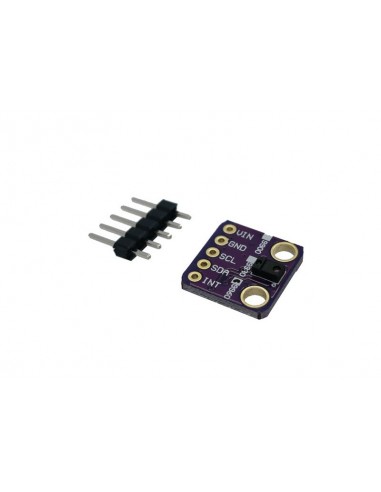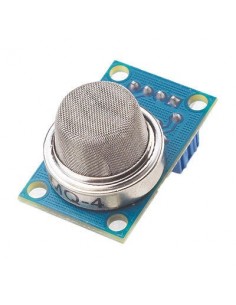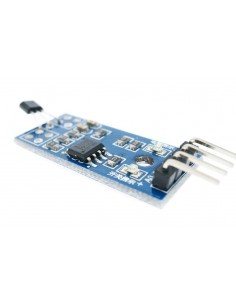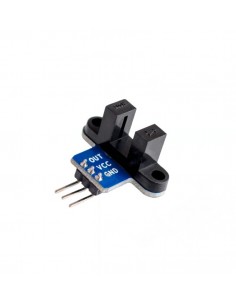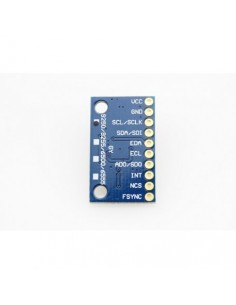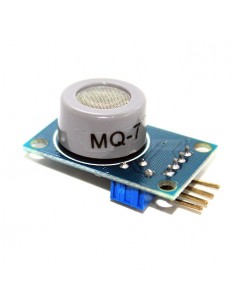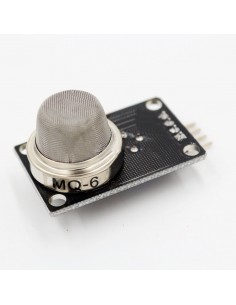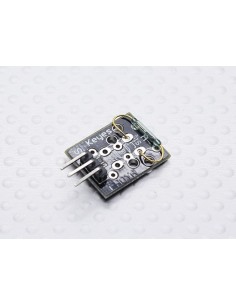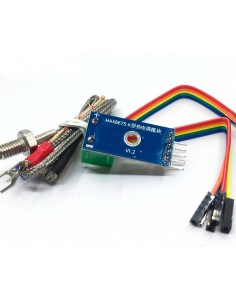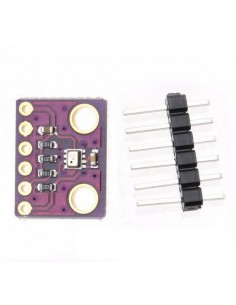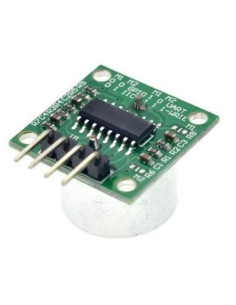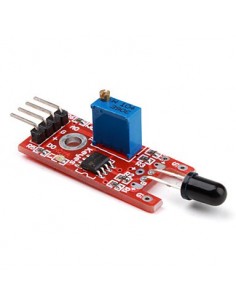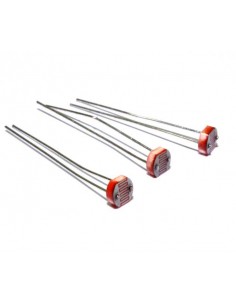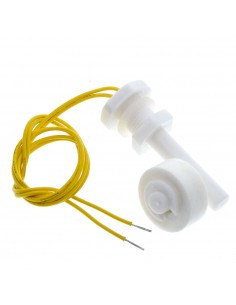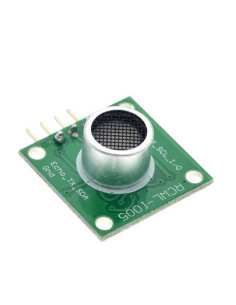GY-9960LLC APDS-9960 RGB and Gesture Sensor
Gesture, light, color and proximity sensor
Description: Sensor for gestures, light, color and approximation APDS-9960
APDS9960 sensor - is able to determine the level of illumination in Lux (both general and for three channels of the spectrum - red, green, blue), the approach of objects (obstacles) and gestures (movement of objects to the left, right, up, down, to the sensor and from ).
General information:
The module is based on the eponymous sensor APDS9960, which is composed of 4 photodiode for detecting gestures 3 photodiode responsive to the different spectra to determine the colors, one photodiode total light, UV and IR filters, amplifiers with programmable gain, MC, ALU, ADC, RAM, I2C bus controller with slave address 0x39 and many additional blocks. The results of illumination in Lux are derived using an empirical formula for approximating the reaction of the human eye.
Gestures:
- The sensor APDS9960 is able to respond to the following gestures:
- UP - Hand movement in front of the sensor. FORWARD or UP (depends on the position of the sensor in the space).
- DOWN - Movement of the hand before the sensor BACK or DOWN (depends on the position of the sensor in the space).
- LEFT - Move the hand in front of the sensor LEFT .
- RIGHT - Move the hand in front of the RIGHT sensor .
- NEAR - Approaching the hand To the sensor.
Smoothly zoom in hand to the top of the sensor at a distance of ≈ 1-5 cm., Hold it for at least 1 second, and quickly move in any direction. - FAR Removing hands FROM sensor.
Quickly move your hand to the sensor from any direction, for a distance of ≈ 1-5 cm, hold it for at least 1 second and smoothly remove from the sensor upwards. - NONE The sensor detected movement, but could not recognize it.
Connection:
The sensor APDS-9960 logic and power only 3.3 V!
The SDA and SCL module leads are connected to the I2C Arduino hardware bus. If your Arduino has 5V logic, the SDA and SCL pins are connected via a 3.3V to 5V bi-directional level converter.
The conclusions GND, VCC are the power outputs (VCC output - the module power is +3.3 V).
The INT output of the module is the output of the interrupt (active level - logical "0") which, depending on the selected operating mode, can respond to brightness, object detection, actions, etc. You can not use this conclusion (constantly polling the module), you can use it for its intended purpose (connect to the Arduino output supporting an external interrupt) and interrogate the module only by external interruption, and you can connect to it a normal LED that will signal that the module has responded to some action or event.
Specification:
- Input power supply voltage (VCC): 2.4 ... 3.6 VDC (nominally 3.3 V).
- Current consumed by the module:
- In the mode of measuring the illumination level: up to 250 μA.
- In the approximation mode: up to 790 μA.
- In the mode of detection of gestures: up to 790 mkA.
- Standby time: up to 38 μA.
- In sleep mode: up to 10 μA.
- I2C bus clock frequency: up to 400 kHz.
- The address of the module on the I2C bus is 0x39.
- Operating temperature: -30 ... +85 ° С.
- Storage temperature: -40 ... +85 ° С.
- Dimensions: 15x20 mm
- Weight: 3 gr.

